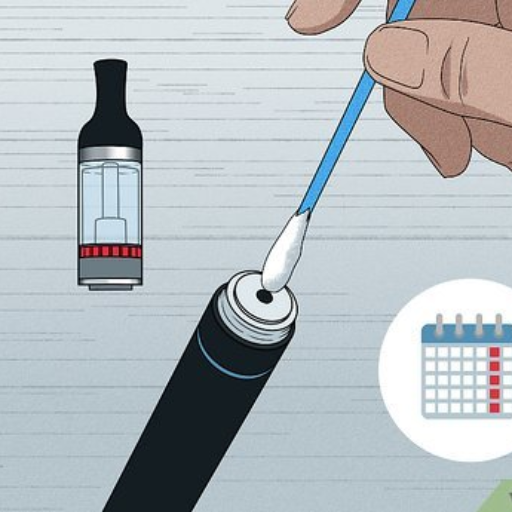The electronic cigarette icon serves as a standardized visual representation for e-cigarettes, vaping devices, and related products or actions. Its primary functions include:
Standard Design Attributes
Device Representation: Typically depicts a stylized, abstract version of a pen-like or rectangular mod device, often shown emitting stylized vapor (wavy lines or a cloud symbol). Simplified line art is common.

Color Conventions: Frequently uses monochrome schemes (black/white) or specific restricted palettes. Warning icons may incorporate prominent yellow and black or red for hazards.
Universal Symbols: Often incorporates a stylized “battery” outline or “power button” circle. Emitted vapor is a nearly universal element distinguishing it from regular cigarette icons.
Key Functions & Regulatory Context
- Product Identification: Quickly identifies e-cigarette products in retail environments, online marketplaces, or app interfaces (e.g., vape shop apps).
- Function Indication: Denotes vaping-related actions in digital interfaces (apps, control panels, settings menus).
- Warning & Prohibition: Used in “No Vaping” signage, sometimes combined with a prohibition symbol (circle with slash). Specific icons warn about battery risks (explosion symbol), nicotine content (chemical symbol), or age restrictions (18+/21+).
- Regulatory Compliance: Subject to specific design requirements in various jurisdictions (e.g., size, color, accompanying text for health warnings mandated by agencies).
Critical Design Considerations
- Clarity & Recognition: Must be instantly recognizable as representing an e-cigarette, not a USB drive, pen, or inhaler. Consistency with known device shapes is vital.
- Compliance: Designers must adhere strictly to regional regulations regarding health warnings, prohibitions, and age restriction symbology. Non-compliant icons carry legal risk.
- Universal Understanding: Aim for designs transcending language barriers, focusing on clear, simple visual elements.
- Contextual Use: Meaning changes drastically based on context (product logo vs. warning sign vs. app function). Accompanying text or supporting symbols are often essential.
- Risk Communication: Icons communicating hazards (battery, nicotine toxicity) require standardized, high-contrast designs for maximum visibility and comprehension.









